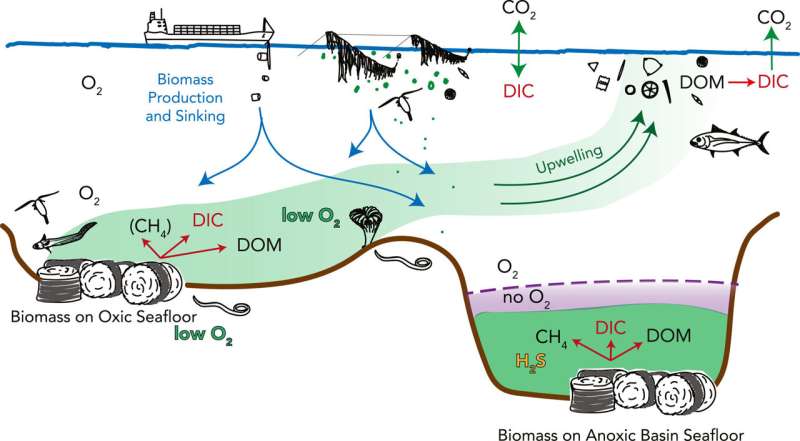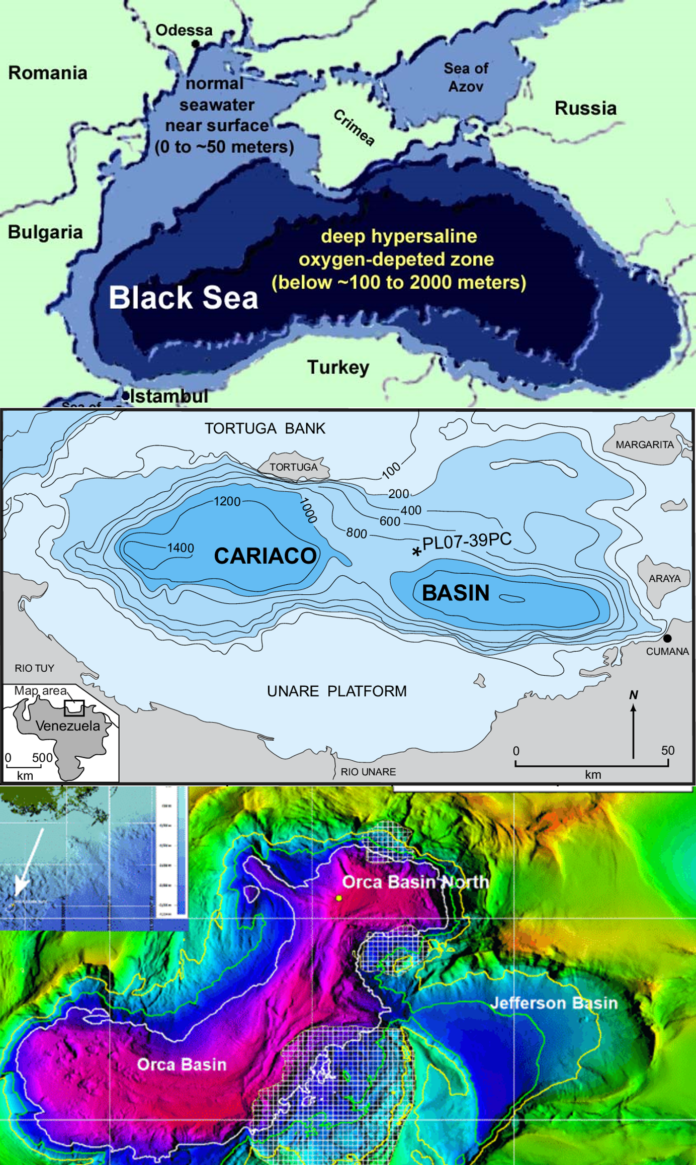More than a decade ago it was proposed that captured carbon be liquefied and pumped into giant weighted bags that would be sunk to the bottom of the ocean to remain there in perpetuity, held in place by the immense weight of the water above. At the time, I thought the idea was preposterous.
Already, the ocean is the largest carbon sink on the planet. It has kept a lid on our excess emissions but at a cost. The carbon dioxide (CO2) being absorbed by seawater is making it more acidic which is endangering all shellfish, crustaceans, phytoplankton, and corals.
A new take on the deep ocean storage idea is to sequester carbon in areas where there is a paucity of oxygen-dependent marine life. Instead of giant bags in which to store CO2, the weight of the ocean water column would be enough to keep the carbon sequestered.
Researchers at the University of California in Santa Barbara (UC-Santa Barbara) have identified three potential carbon storage sites that are anoxic marine basins where vast amounts of plant biomass could be sunk to the ocean floor.
What are anoxic marine basins? Oxic and anoxic are opposites. Ocean environments are largely oxic, that is, oxygen-rich. Some areas, however, are anoxic containing little to no oxygen. These areas of the ocean can only support anaerobic life. Anaerobics include many bacteria and fungi. The creatures found near deep-sea hydrothermal vents which scientists call archaea, are anaerobic. They use other types of chemistry within the ocean to harvest energy to sustain them and they predominate in deep sea basins where there is low to no oxygen present.
The UC-Samta Barbara researchers have published a study of three candidate anoxic basins that could become permanent carbon storage sites. Their locations are:
- the Black Sea where Ukraine and Russia are currently engaged in a war,
- the Cariaco Basin off the coast of Venezuela,
- and the Orca Basin in the Gulf of Mexico.
The Black Sea Basin is the largest anoxic basin in the world covering 322,367 square kilometres (124,467 square miles) and sinking to a depth of 2,300 metres (7,500 feet). Below depths of 150 metres (approximately 490 feet), there is no dissolved oxygen. The water in the Black Sea does very little intermixing with the Mediterranean.
The Cariaco Basin is a deep trench with a middle ridge that splits it in two. It covers 2,000 square kilometres (770 square miles) off Venezuela’s Caribbean coast. As seen in the middle picture above, it has no dissolved oxygen below a depth of 100 metres (330 feet).
The Orca Basin covers approximately 10,000 square kilometres (approximately 3,860 square miles). Seen at the bottom of the illustration accompanying this posting, the Orca Basin’s anoxic zone lies 2,200 metres below the surface and extends for 200 metres to the Gulf of Mexico seafloor bordering Louisiana and Texas.
Of the three, the study notes the Black Sea in particular could “accept biomass storage at climatically relevant scales with moderate changes to the geochemical state of abyssal water and limited communication of that impact to surface water.” If done correctly, it could provide safe storage for more than 1,000 years and make a real dent in CO2 atmospheric numbers.
The UC-Santa Barbara research notes that the separation between oxic and anoxic water is very distinct because of drastic differences in density within the water column between the surface and anoxic zones that tend to be hypersaline. One researcher notes that when navigating a submersible underwater it actually will bounce off the demarcation line between the layers.
Why would using anoxic marine basins possibly work? Geoengineering solutions focused on carbon sequestration appear to be an acceptable way to mitigate climate change if you go by the discussions at COP28. According to The Guardian, 475 were in attendance at the Dubai conference.
Plant biomass has become one of the strategies under consideration for carbon sequestration. The sinking of kelp, sargassum, and algae plant biomass was recently covered here at 21st Century Tech Blog. The article featured a company called Running Tide which was developing biomass seeding technology to fast-cycle seaweed biomass containing captured CO2 to the bottom of the ocean.
One of the issues raised in the article was a concern about dropping massive amounts of biomass to ocean floors in oxygen-rich zones. It appears, however, that using the technology in the Black Sea, or the other two anoxic marine basins, we could achieve decarbonizing at megaton levels using sunk biomass that would be an effective climate change mitigation solution for a millennium.

















